When you’re trying to convince an individual to buy your product, you play a different game than convincing a company. With B2C, emotions guide the buying decisions, so you just have to pull at the right strings. But with B2B email marketing, a single email won’t be enough.
You can’t expect a business to make huge investments on impulse. They’ll assess their current situation, evaluate their needs, forecast the results, and then think about buying.
Therefore, an elaborate strategy to guide your potential customer through the journey would work better here.
But creating this strategy is not as simple as it sounds. You must do a lot of research and follow the tested methods for it to go right. If you’re ready to put in the work, this guide will help you through the process.
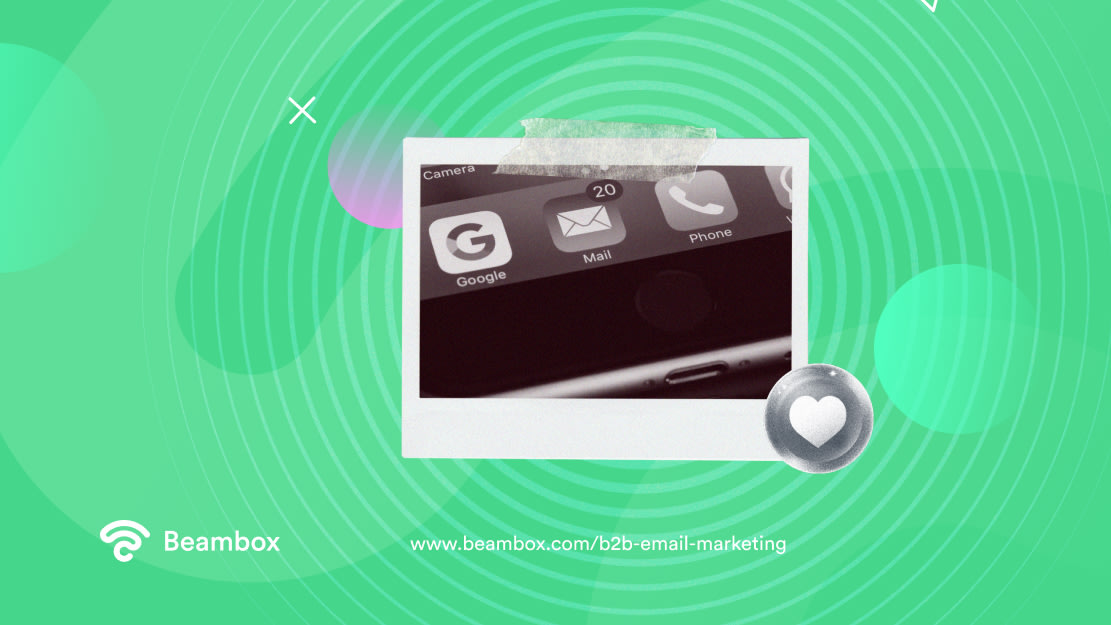
Email Marketing B2B Lead Generation: Is It Worthwhile?
B2B stands for business to business and refers to the relationship between companies. In Email marketing for businesses, you send out a series of emails to nurture your leads and sell at the right time. You can send emails to leads in your CRM database or to leads you don’t really know. The former is B2B cold email marketing.
But you can’t possibly keep up with the journey of each and every customer, right?
For that, you can automate the emails according to various trigger events. Now, you might argue that this is the same as B2C email marketing, but it’s not. Buying cycles are longer in B2B than in B2C. Plus, the timing differs because businesspeople likely won’t check their emails before or after working hours.
Moreover, the tone in B2C is more urgent, and customers usually take immediate action. On the other hand, B2B emails are more professional and focus on creating a relationship rather than immediate sales.
But a burning question that arises here is, “Is email marketing B2B lead generation worthwhile?” Well, here’s your answer.
Firstly, B2B emails have an open rate of 21.56%, which is quite higher than other types of emails. This means B2B buyers actively look at their emails to look for news and updates about products they might need. This engaged audience brings a higher ROI for B2B emails.
Secondly, emails give a guarantee to land right in the inbox if you’ve followed the right strategies.
Thirdly, this channel allows personalization where you’re talking directly to your lead. This trait gives you even more chances of conversions.
Lastly, you can automate email campaigns according to your customers’ activities. This isn’t possible on other marketing campaigns where your content reaches a general audience.
How To Come Up With an Effective B2B Email Marketing Strategy?
If you’re eager to jump right in after learning what B2B email marketing is, you might want to stop for a minute. You don’t have a game plan yet, so anything you do won’t give you the results you’re looking for.
Plus, it isn’t just about the words you choose. It demands lots of research so you can make informed decisions. So, here’s how to come up with an effective B2B email marketing strategy:
- Know your target audience: Email campaigns don’t work without personalization. But how will that be possible if you don’t know your target businesses? Therefore, your first step is to define your customer profile. Look into their demographics, preferences, and history.
- Understand their journey: Once you have the initial information, you’ll be able to understand how they behave. This is important because it will help you create emails according to their needs. Each business’s journey is different since they act on data rather than impulse.
- Define your marketing mix: Next, define the 4 P’s: your product, its price, the place where people can buy it, and its promotion channels. When you combine this information with audience research, you can create an evergreen marketing strategy that sells.
- Create email campaigns: Once you have all the research, it’s time to act on it. Create email campaigns, positioning your product and its pricing in such a way that it appeals to your target audience.
- Automate and measure: After you’ve figured out which emails you’re going to send, you must think about automating them. Set triggers when your target businesses perform an action, such as researching similar products. And lastly, measure the results to make your campaigns even better.
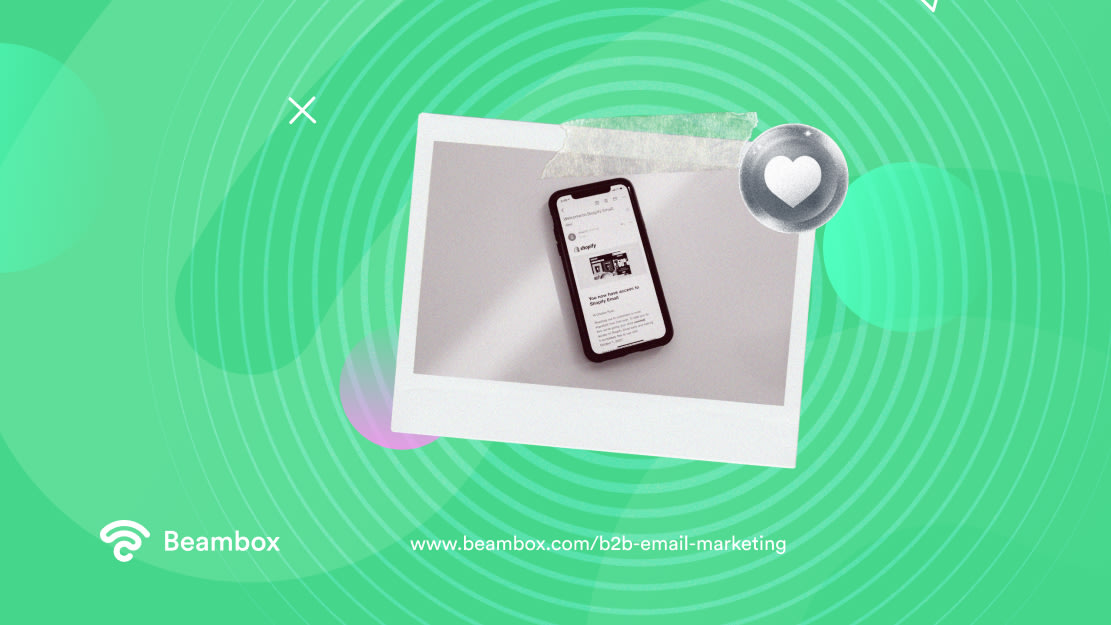
Basic B2B Email Marketing Examples
Different stages of the buying journey require a slightly different convincing tactic. So, there are various types of emails you must send along the customer journey.
Looking at B2B email marketing examples is always the best approach here. However, email marketing basics are always the same, whether it is B2C or B2B.
Let’s start with welcome emails. It doesn’t matter whether your brand image is friendly or sophisticated. You must send welcome emails to every business that chooses to get your newsletters.
Include a welcome greeting, introduce your company, and let the customer know how many emails they’ll be receiving.
Moreover, if you promised something in return for their email address, remember to add its link in the welcome email.
Next in line are announcement emails. These are primarily for the people who are already using your products. You can send these emails when you introduce a new feature or related product. They also help when you set up pre-orders or launch limited editions.
But remember, these will only work if you personalize them according to the customers’ experience with your products.
Then, there are re-engagement emails that aim to bring back customer engagement. They may have stopped buying from you, so these emails help you provide reminders, exclusive offers, and urgency.
Other examples are farewell emails, cross-promotion, exclusive content, case studies, and informative emails.
6 B2B Email Marketing Best Practices That Make All the Difference
When done right, email marketing can give results that no other channel can. B2B marketers enjoy a return of $36 for every dollar that they spend on it.
Until now, we’ve only focused on the theoretical aspect. Learning the theory is one thing, but putting it into practice requires time and effort.
Therefore, we have compiled a list of B2B email marketing best practices to help you jump right in.
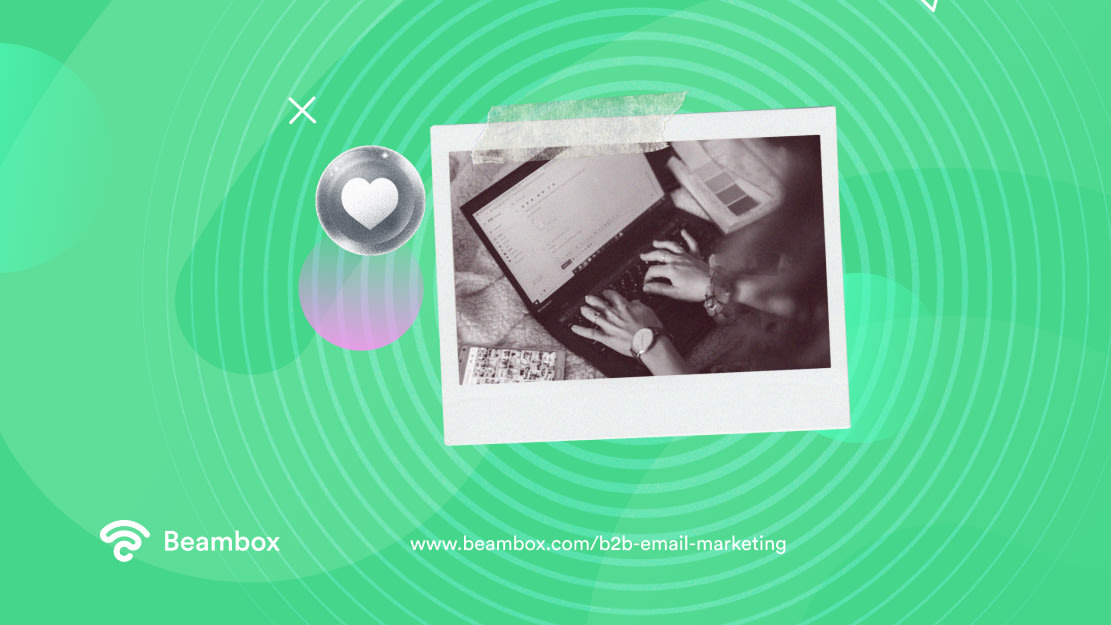
Use the Right Tone To Set the Stage
Having consistent branding across all marketing materials builds a sense of familiarity and recognition. So, your first step is to decide the tone when writing B2B emails. Here’s why.
People have a certain image in mind for different industries. For example, email marketing in the retail industry works better if you use a professional, clean, and engaging tone.
This is because your industry is a serious one, and people need to trust your words. On the other hand, a toy store would be better off with a playful tone that appeals to children.
However, remember to maintain the human element since nobody likes to read long and boring emails.
Instead, tell a story to your readers and act like you’re having a conversation with them. Asking questions is the best way to keep your content conversational.
That’s when you will be able to hook your readers and encourage them to take action.
Never Let Go of Personalization
Keeping your email conversational without personalizing it won’t make much of a difference. Here’s how to do it.
Firstly, use the reader’s first name in the body and subject lines. This will make them feel like you’re talking directly to them even though you’ve probably automated the email.
But it’s not just about using the reader’s first name either. Things like WiFi marketing, loyalty programs, etc., have made it easy to collect customer data.
So, the second way to personalize emails is to use customer data and customize your offer according to their preferences. But you have hundreds of customers. How would you keep track of who likes what?
Well, the answer to that is segmentation. You can use different tools to divide the customers into groups. It can either be demographic or preference-based.
For example, suppose you own a skincare brand. Some customers would be more interested in acne products, while others would want something for dry skin. You can segment customers according to such preferences and send out automated emails about the skin issue they have.
Thirdly, instead of sending mass emails from the company, you can include the name of one of the executives. This person should be the one who is in charge of the particular subject you’re emailing about.
This way, people will trust the email more even though you have automated it. They will feel like the executive wrote the email specifically for them.

Hook Your Readers With the Subject Line
The next best practice is to make your subject line engaging. After all, it’s the first thing the reader will see when they receive your email. So, it should make them want to open your email. Here’s how to write the perfect subject line.
Start by perfecting the length. Your subject line should not be more than 50 characters, especially if your readers are viewing your email on mobile.
Email apps truncate subjects that are longer to make them fit on the screen.
When people can’t read the whole subject without opening the email, it annoys them. They might immediately send your mail to the trash folder.
This brings us to our next point. Use the subject to make the email’s purpose clear. The readers should know what to expect if they open your email.
However, some people argue that the subject lines should leave a cliffhanger to lure the customers in. Of course, that would be a good path to take if your focus is storytelling.
But even then, it should give readers an idea of what’s coming. Plus, it should be engaging and understandable.
Moreover, you must stray away from spam words. If you use them in the subject line, your email may end up in the spam folder. But what are spam words? Discount, help, urgent, and cheap are just a few examples.
Here are some good subject lines to get your creative juices flowing:
- Invite only! Join us on September 12, 2023
- The only AI writing assistant you need
- [First name], do you want a 10% revenue boost?
Keep It Short and Easy To Read
As mentioned earlier, nobody likes to read long and boring emails. If you don’t leave white space, readers will come across long walls of text. This will discourage them even if you’ve used an engaging, conversational tone.
Therefore, keep your email short and to the point. Extra fluff will only take away your authority and bore the readers. They may even abandon the email before getting to the main part.
Ideally, your email’s text should be between 50 and 125 words. Shorter than 50 won’t convey the message, while longer than 125 will take away the charm.
Break the text into small, digestible paragraphs, and avoid cramming words.
Use a mixture of short and long sentences to keep the element of surprise.
Moreover, you must add at least 1 to 3 images in the email body. Images are easier to understand and add context to the words you’ve written.
When you accompany text with images, it may even give the illusion that there aren’t as many words to read.
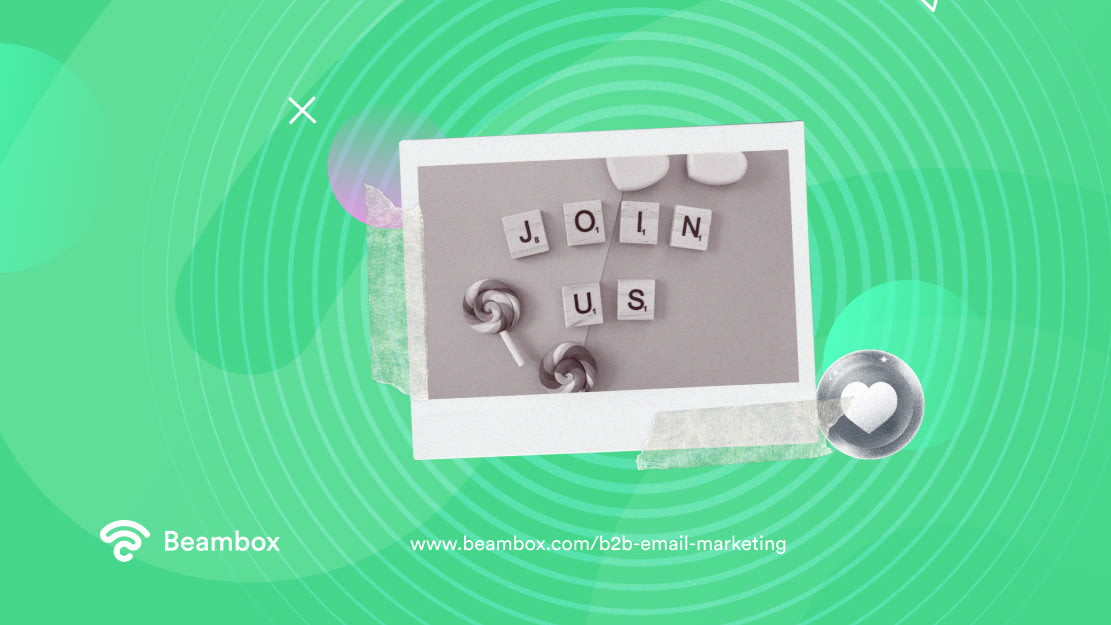
Don’t Forget the Call to Action
Once you’ve written the body text following the above best practice, you must add a call to action. Ending without a call to action can confuse the readers about the steps they need to take.
Therefore, they might end up ignoring your email after reading it. Here’s how to get it right.
Clearly tell the readers what you need them to do. It’s also a good idea to add multiple calls to action depending on the text.
Keep the language simple and understandable, and don’t ask for a big step. Many people don’t realize this, but asking someone to get on a call for 30 minutes is a pretty big ask. Make this button visible, and use your brand colors.

Send Emails to the Right Inbox by Cleaning Your Email Lists
All of the above best practices will go to waste if you don’t clean your email lists. This means bidding farewell to all inactive emails as well as people who have asked to unsubscribe.
What difference would an engaging story and the perfect subject line make if your email doesn’t reach the right person?
It’s a good practice to clean your email lists quarterly. To do this, you can use email scrubbing tools like ZeroBounce. These tools give you metrics like bounce rate, etc., to tell you if your email list needs cleaning.
Sometimes, people accidentally subscribe to your newsletter multiple times. So you can remove or merge duplicate accounts.
Moreover, correcting typos and making accurate fields of data can also help keep your email lists clean.
Lastly, use protocols like double opt-ins to make sure the customers really want to join your list.
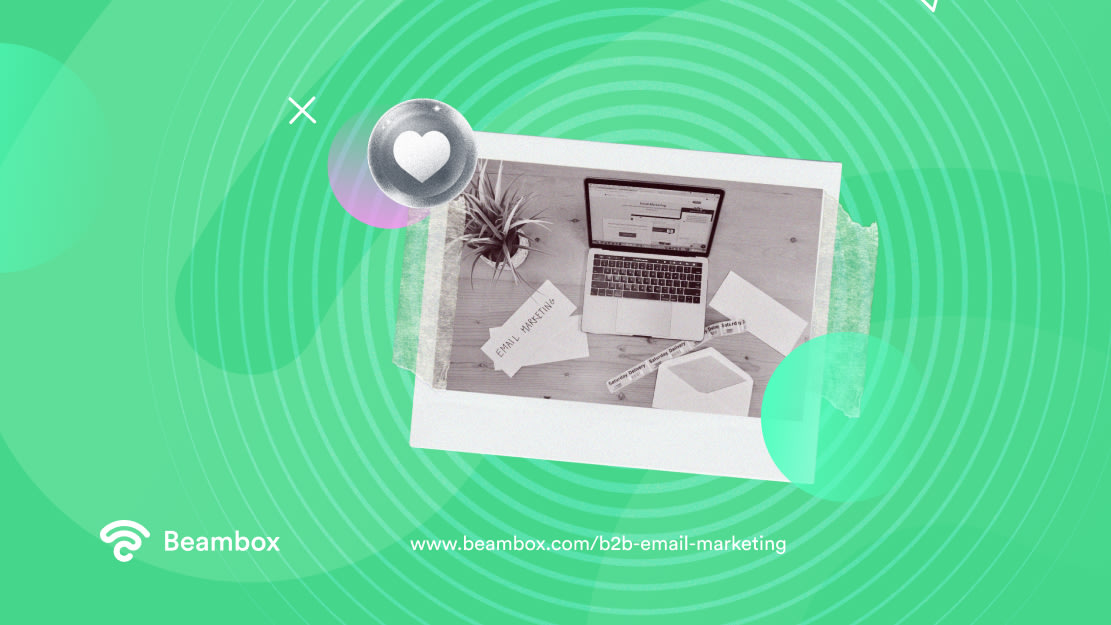
Invest in B2B Email Marketing Services To Take Some of the Burden Away
By now, you must be pretty familiar with B2B email marketing. But why do it yourself when you can easily offload it? The best part is that you don’t even have to hire a dedicated team.
Now, with so many companies out there offering B2B email marketing services and fancy tools, it can be a bit overwhelming. How do you even begin to choose?
Well, it all comes down to your specific needs since different services provide different features. But whatever you choose, you must be able to create a template, automate emails, and incorporate your branding.
With that said, let’s explore some of the best options in the market. Brevo leads this list with a drag-and-drop functionality to design your emails.
Plus, we all know how important it is to optimize your emails for mobile. Brevo also lets you do that, along with various other perks.
Secondly, Mailchimp is a popular name when it comes to email marketing. It gives A/B testing tools, custom and pre-built templates, and automated workflows.
Thirdly, you can choose AWeber for the best email designs. Other options are ConvertKit, Hubspot, and ActiveCampaign.
Make Lead Generation a Breeze With B2B Email Marketing
Overall, B2B email marketing leads the pack in terms of engaging the business audience and promoting your products. The credit here goes to the personalization and affordability emails offer.
However, you must follow some ground rules to make the best of it. Write like you’re having a conversation, create an engaging subject line, and make your email readable. Don’t forget to add images and calls to action.
If you run a local business and you want to improve your marketing results, try out Beambox. It is a WiFi marketing platform that allows you to scale your business with automated marketing campaigns. Start your free trial today!
Get Started With Free WiFi Marketing
Beambox helps businesses like yours grow with data capture, marketing automation and reputation management.
Sign up for 30 days free